Preparing for the unexpected is a challenge we all face, whether planning an outdoor adventure or ensuring our family’s safety in emergencies. From the earliest hominids to modern humans, survival gear has evolved significantly, tracing back over 2.6 million years of innovation.
This article will guide you through this fascinating evolution—from simple stone tools to sophisticated technology—and how it enhances your ability to thrive against the odds. Get ready for a journey through time!
Table of Contents [show]
Key Takeaways
- Early humans made Oldowan tools 2.6 million years ago by striking rocks to create sharp edges for cutting.
- Around 1.6 million years ago, people crafted Acheulean handaxes, which were sharper and better for hunting and gathering.
- About 80,000 to 40,000 years ago, the Aurignacian industry introduced stone blades attached to handles, making the first knives.
- Between 11,000 and 17,000 years ago, Magdalenian culture saw small microblades used in versatile ways like spears or woodworking tools.
- Modern survival gear includes compact life-saving supply bundles with food, water, first aid kits, and high-tech items like power tools powered by lithium batteries.
The Dawn of Survival Gear: Ancient Times
Stepping back into the mists of prehistory, we encounter our earliest ancestors armed with little more than their wits and the most rudimentary tools—yet these simple creations laid the foundation for all survival gear to come.
These ancient innovators harnessed their surroundings, fashioning sharpened stones into cutting tools that would shape humanity’s destiny.
Sharpened stones (Oldowan tools): 2.6 million years ago
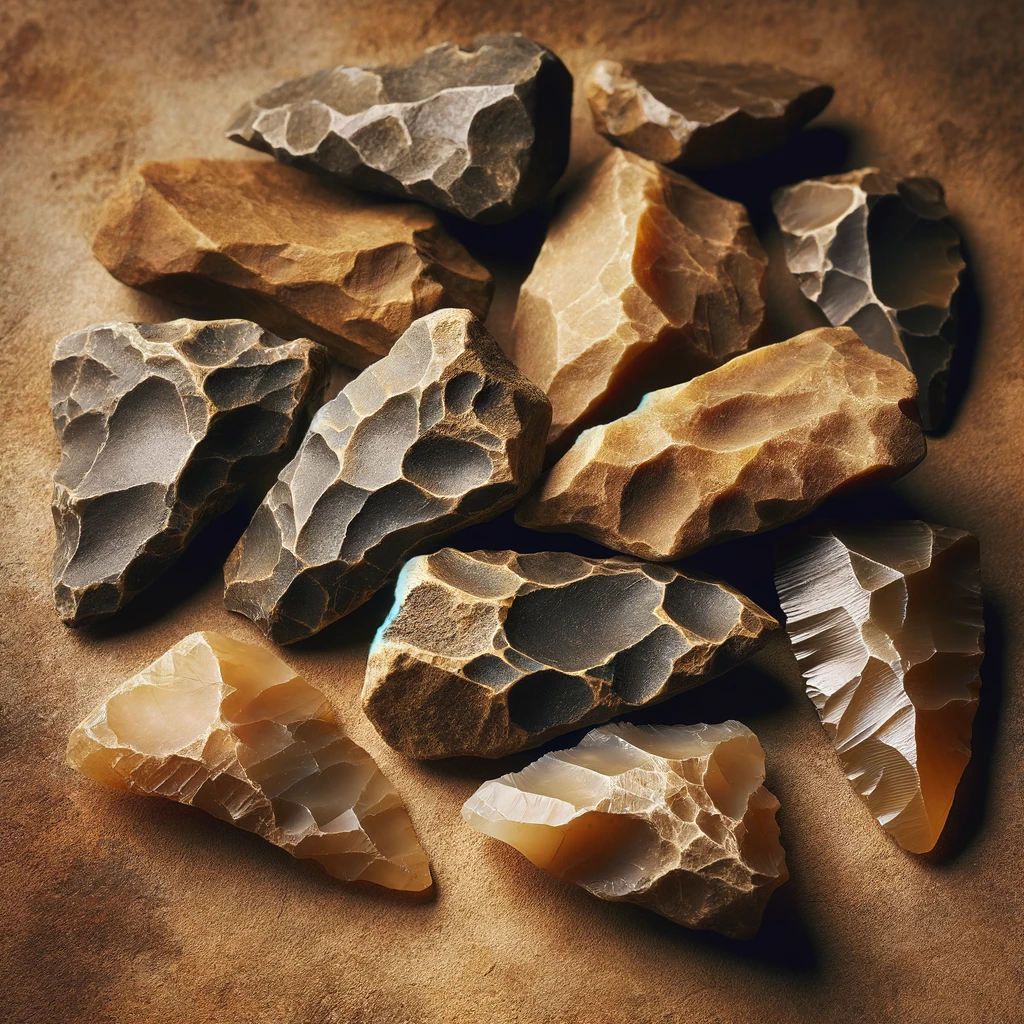
Homo habilis changed the game 2.6 million years ago. These early humans made the first stone tools known as Oldowan tools. They shaped rocks into sharp edges by striking them together or against other surfaces.
This invention was huge!
People used these sharpened stones to cut meat from bones and chop plants. The simple design of Oldowan tools helped our ancestors survive in a tough world. They could scrape hides and dig for edible roots, making life easier in prehistoric times.
Stone handaxe (Acheulean tools): 1.6 million years ago

Around 1.6 million years ago, early humans crafted a new kind of tool that changed the game. They created Acheulean handaxes. These tools were not like earlier ones; they had two sides neatly worked to form sharp edges and a pointy tip.
Imagine holding one in your hand: its weight feels good, its edge ready to slice through hide or meat.
Craftsmen in Africa first shaped these stone handaxes. Later, people across Asia and Europe also started making them. Finding these handaxes all over shows how important they were for survival back then.
It’s like finding smartphones everywhere today – it tells you everyone uses them! With a good Acheulean tool in their hands, our ancestors could hunt better and gather food more easily than before.
The design of the Acheulean tools was simple yet smart. They used rock-smashing skills called knapping to make their axes sharp on both sides — this is called bifacial working technique.
Sharp from any angle, these axes helped cut down big tasks into manageable bites – literally!
Evolution of Tools through the Ages
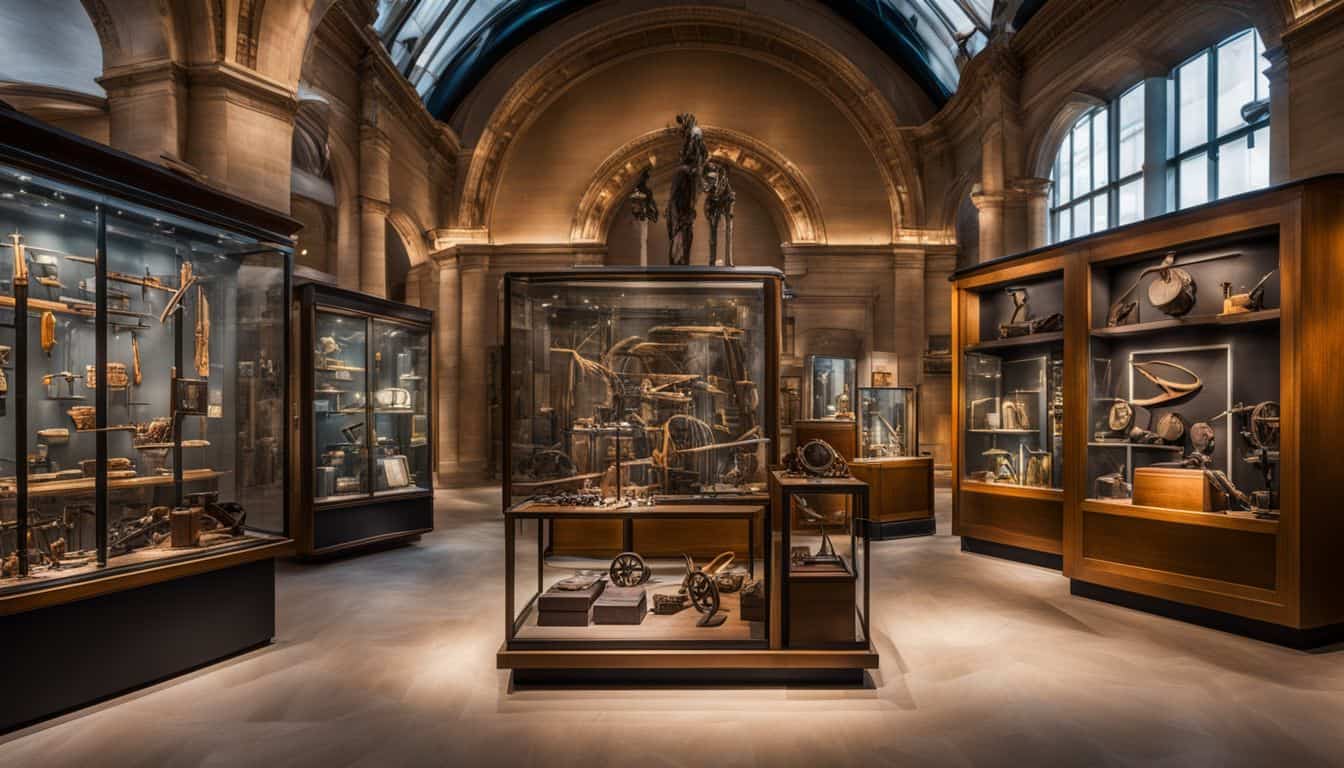
As humanity progressed, so did the complexity and effectiveness of their tools. This era witnessed a remarkable transformation as our ancestors learned to craft more intricate items—ushering in new chapters of innovation with each evolutionary stride.
Cutting blades (Aurignacian industry): 80,000 to 40,000 years ago
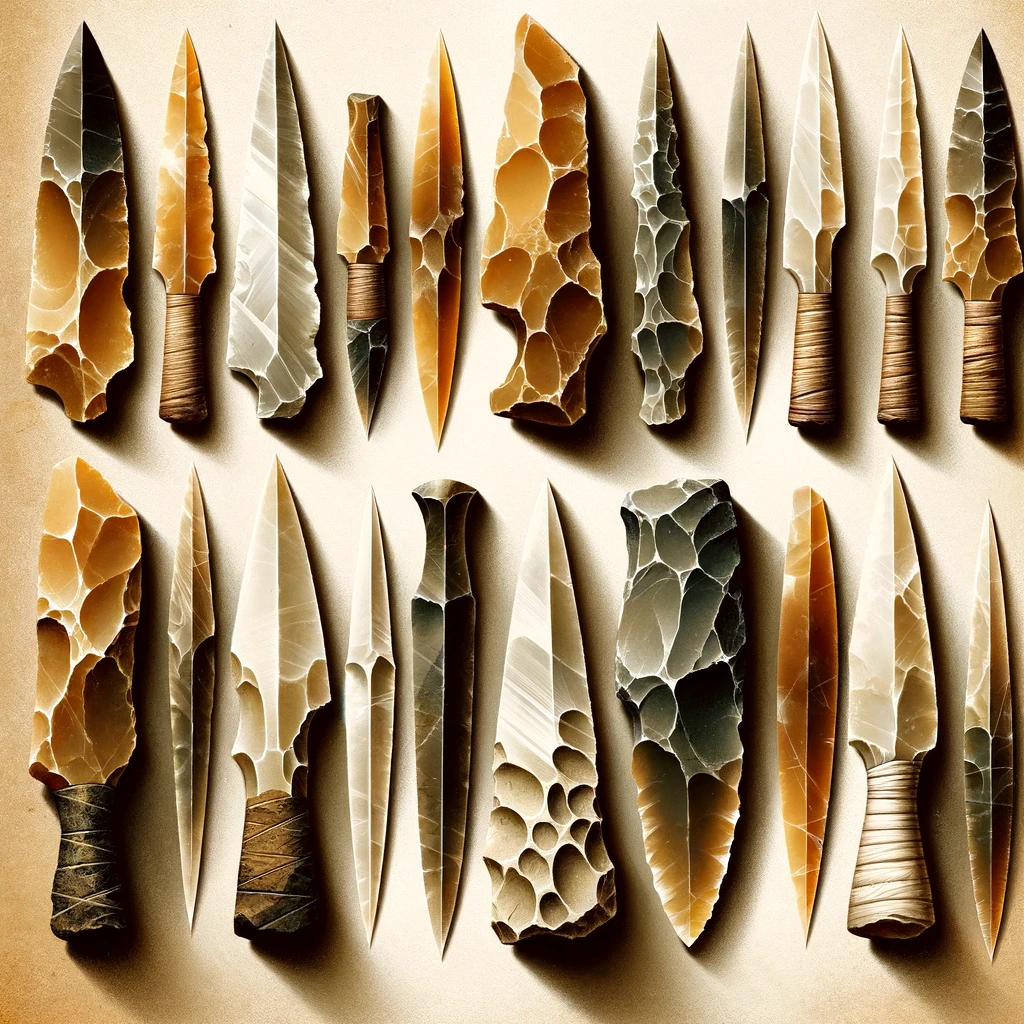
Early humans made a big step forward with Aurignacian tools. They started creating long, sharp blades from stone cores around 80,000 years ago. These blades were smarter and easier to use because they could be fixed to handles.
This made cutting and hunting much faster and better than before.
Aurignacians knew their stuff; their method was clever. They would strike a stone core just the right way to get a long blade off it. Then, they put these blades on sticks or bones – making the first proper knives! It wasn’t just about survival anymore; our ancestors became real hunters and craftsmen with these tools.
Small, sharp micro blades (Magdalenian culture): 11,000 to 17,000 years ago
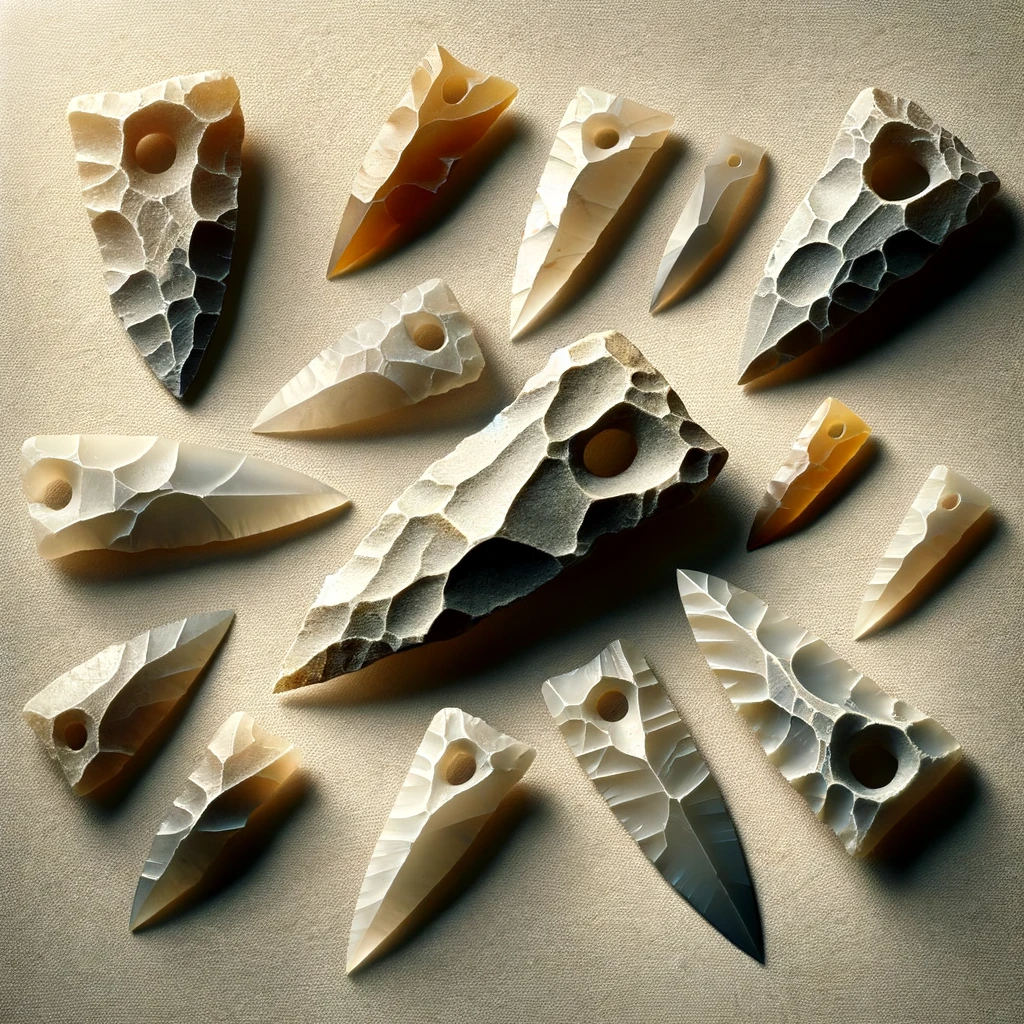
Humans got clever with tools during the Magdalenian culture. They carved out small, sharp microblades from stone 11,000 to 17,000 years ago. These blades were a big deal—they could cut, whittle, and prepare food like nothing before.
People used them as parts of larger tools, too. Think of spears for hunting or carving wood to make shelters.
These tiny blades changed the game in survival gear. With them, our ancestors hunted better, made better clothes, and handled their environment like bosses. Microblades might sound simple, but back then? They were the Swiss Army knives of their time—super versatile and ready for anything that came their way!
Axes, celts, chisels (Neolithic tools): around 12,000 years ago
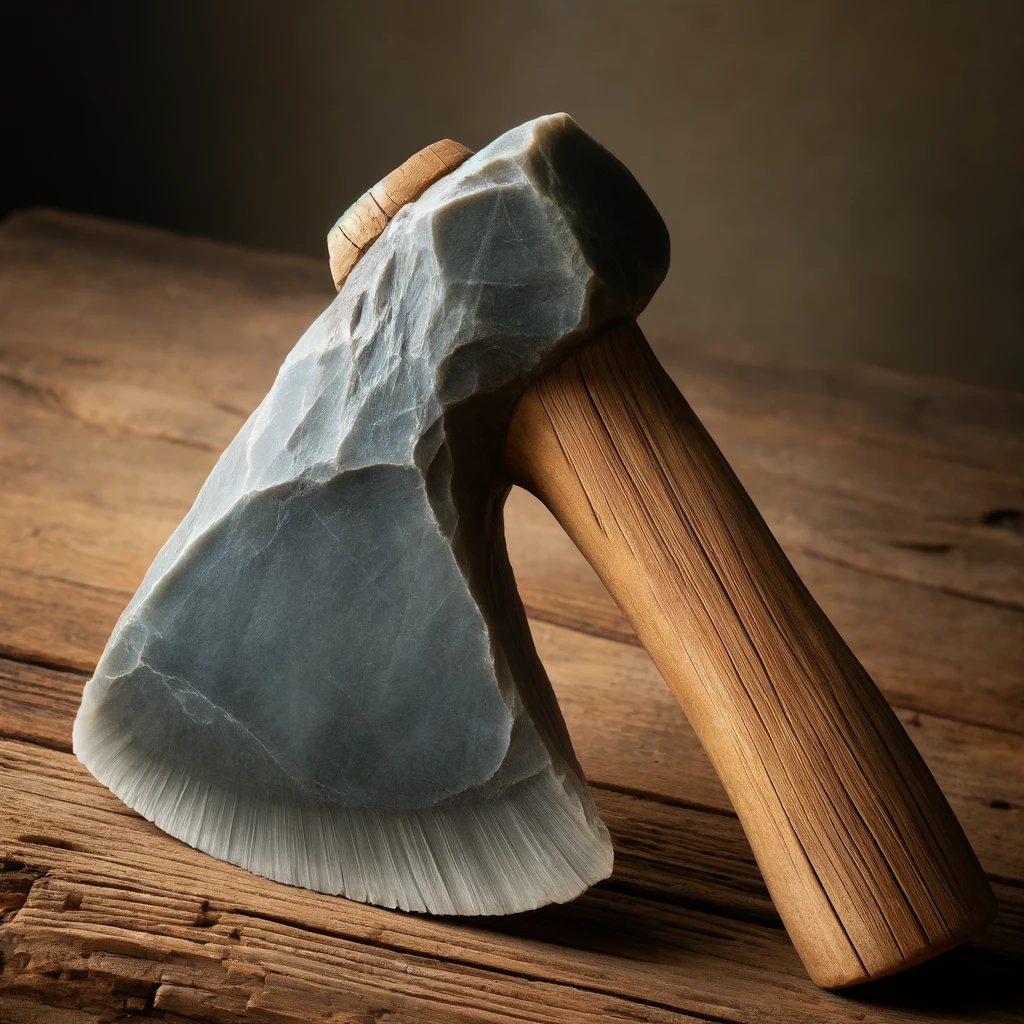
Axes, celts, and chisels revolutionized how early people lived about 12,000 years ago. These Neolithic tools marked a huge step forward. Carved from stone, they made hunting and building easier than ever before.
With these new tools, people could chop wood for shelters and cut through tough animal skins.
These powerful items signaled the start of advanced civilizations. With axes, folks cleared forests for farming land. Celts became handy in crafting smooth wooden structures. Chisels helped shape fine details in wood and bone creations.
Their use spread as humans learned to craft better survival gear that lasted longer and did more jobs well.
Modern Survival Gear: The Technological Leap
Survival gear has undergone a staggering transformation as we vault into the contemporary era, eclipsing basic hand tools with sophisticated technology that empowers modern adventurers.
This leap in innovation enhances efficiency and effectiveness and redefines our relationship with the wild, merging ancestral instincts with cutting-edge advancements to confront nature’s challenges head-on.
Life-Sustaining Supply Bundles
Life-sustaining supply bundles are the heart of modern survival gear. They pack essentials such as food, water, and first aid into compact kits that can save lives during emergencies.
These packs have come a long way from the flint stones and animal skins our ancestors relied upon. They combine high-tech items with basic necessities, ensuring you’re prepared for any situation.
These bundles might include tools powered by lithium batteries—lightweight yet powerful lifesavers in times of need. Cordless drills and saws help create shelters or signals for help without being tied to an electrical source.
The evolution from simple hand tools to advanced gadgets shows how far we’ve come in keeping ourselves safe against nature’s unpredictability.
Evolution of Hand Tools
Hand tools have come a long way since their early beginnings. Our ancestors started with simple stone devices over two million years ago. They needed to hunt and survive, so they made sharpened stones and axes.
This was just the start of something big. As time passed, people found better ways to build tools that required less effort from humans.
Electricity changed everything for hand tools. Tools like power drills and circular saws made jobs easier and faster than ever before. Blacksmiths who once used hammers now had machines to do heavy work.
We moved from using muscle power alone to letting electrical energy take the lead. These improvements in hand tools helped us build bigger things and solve harder problems much more quickly than before!
The Impact of Modern Technology on Survival Gear
Modern technology has transformed survival gear, making it more effective and easier to use. Batteries now last longer, thanks to lithium-ion advances. Power tools have become wireless and thus more portable.
These changes help people in tough situations stay safer for longer periods. GPS devices guide adventurers through unknown terrain with accuracy unheard of in the past.
Survival experts now wear smart garments that control body temperature and monitor vital signs. Tents can harness solar power to charge devices or light up at night without fire risks.
Each piece of modern equipment is designed for durability, reliability, and multipurpose use – a critical feature when every ounce carried could make the difference between success and failure in a survival scenario.
Modern Survival Gear: Leveraging Technology for Enhanced Safety and Utility
Here are some examples of survival gear that showcase modern improvements:
- Satellite Communication Devices: Compact, handheld devices like the Garmin inReach or SPOT X provide two-way satellite messaging, SOS alerts, and GPS tracking, allowing users to stay connected and call for help even in remote areas without cell service.
- Solar Chargers and Power Banks: Portable solar panels and high-capacity power banks enable users to keep electronic devices like phones, GPS units, and headlamps charged in the field, providing a reliable power source for extended trips.
- Water Purification Systems: Advanced water filters like the Sawyer Squeeze or Katadyn BeFree utilize hollow fiber membrane technology to remove 99.99999% of bacteria and protozoa, making water from natural sources safe to drink without the need for chemical treatment.
- Ultralight, High-Performance Shelters: Modern tents and bivouacs made with high-tech fabrics like Dyneema Composite Fiber (DCF) offer exceptional strength and weather resistance while weighing a fraction of traditional materials, making them ideal for minimalist survival kits.
- Multi-Function Tools: Contemporary multi-tools like the Leatherman Signal or Victorinox Swiss Tool incorporate a wide array of functions like pliers, wire cutters, saws, and fire starters into a single compact device, providing versatility and saving space in a survival kit.
- Advanced Navigation Tools: GPS devices with preloaded topographic maps, digital compasses with adjustable declination, and wrist-top navigation computers with altimeters and barometers provide precise, real-time navigation data to help users stay on course in any conditions.
These are just a few examples of how modern technology has elevated survival gear to new levels of capability and reliability. By incorporating these advanced tools into a well-designed survival kit, individuals can be better prepared to face and overcome challenges in emergency situations. However, it’s important to remember that even the most advanced gear is no substitute for proper training, skills, and knowledge in survival techniques.
Conclusion
Humans have come a long way in how they survive and build. From chipping stones to creating high-tech gear, our journey is amazing. Simple hand tools gave us the power to shape our world.
Today’s gadgets let us do even more with less effort. The story of survival gear shows how smart and creative humans can be!
FAQ
What initiated the development of survival gear?
The journey of survival gear began over 2.6 million years ago with our earliest ancestors. The necessity to adapt and thrive in various environments led to the creation of rudimentary tools. These early innovations, such as the Oldowan tools made by striking rocks to create sharp edges, were pivotal in shaping humanity’s destiny, enabling our ancestors to cut meat from bones and chop plants, thereby significantly enhancing their survival capabilities.
How did survival tools evolve from ancient times to the Neolithic period?
Survival tools underwent significant transformations, evolving from simple stone tools to more sophisticated implements. Acheulean handaxes emerged around 1.6 million years ago, offering sharper edges for more efficient hunting and gathering. Approximately 80,000 to 40,000 years ago, the Aurignacian industry introduced stone blades that could be attached to handles, marking the advent of the first knives. By the Magdalenian culture, between 11,000 and 17,000 years ago, small, sharp microblades became prevalent, showcasing a leap in tool-making sophistication. This era culminated in the Neolithic period with the development of axes, celts, and chisels, facilitating more advanced construction and crafting techniques.
What are the key components of modern survival gear?
Modern survival gear encompasses various tools and equipment designed to ensure emergency safety and sustenance. Key components include compact, life-sustaining supply bundles that contain essential items such as food, water, and first aid kits. Additionally, modern survival gear incorporates high-tech items powered by lithium batteries, such as cordless drills and saws, which are crucial for creating shelters or signaling for help. The evolution towards more advanced gadgets has significantly enhanced the efficiency and effectiveness of survival gear, making it indispensable for modern adventurers.
How has technology transformed the functionality of survival gear?
Technology has revolutionized survival gear by introducing sophisticated devices that offer enhanced efficiency, reliability, and multipurpose use. Innovations such as GPS devices provide precise navigation through unknown terrains, while smart garments control body temperature and monitor vital signs. Solar-powered tents and portable power tools have also become essential components of modern survival kits, reflecting a significant leap from the basic hand tools of our ancestors. These technological advancements have redefined our relationship with the wild, merging ancestral instincts with cutting-edge technology to confront nature’s challenges.
What implications do these advancements in survival gear have for future survival situations?
The continuous innovation in survival gear suggests a promising outlook for future survival situations. As technology advances, survival gear becomes more effective, durable, and adaptable to various environments. This progression enhances our ability to thrive in challenging conditions and opens up new possibilities for exploration and adventure. The integration of advanced technology in survival gear will continue to evolve, offering even greater capabilities and support for individuals facing the unpredictability of nature.


















Leave a Reply